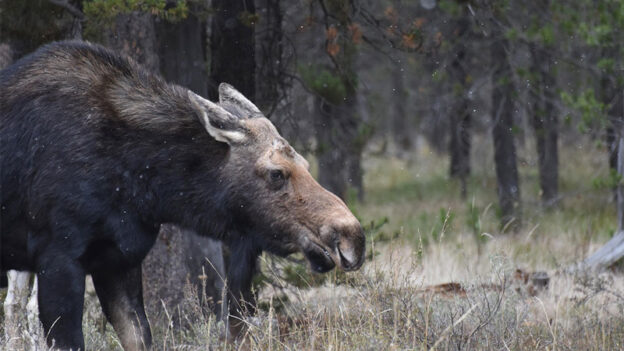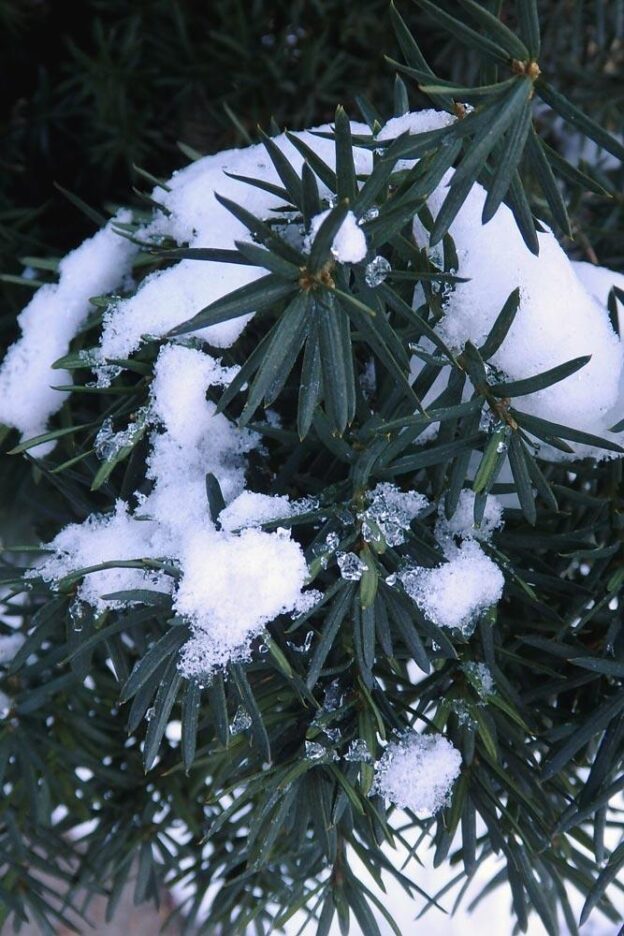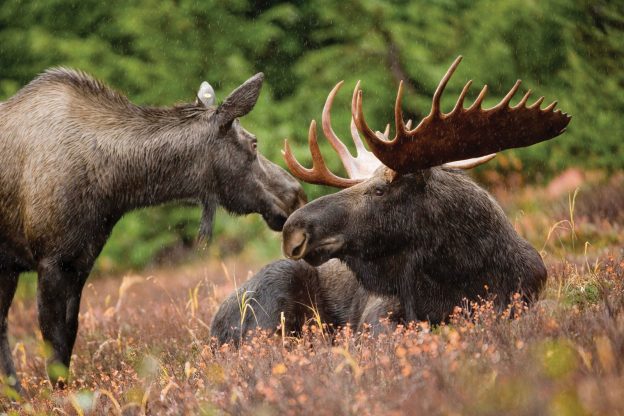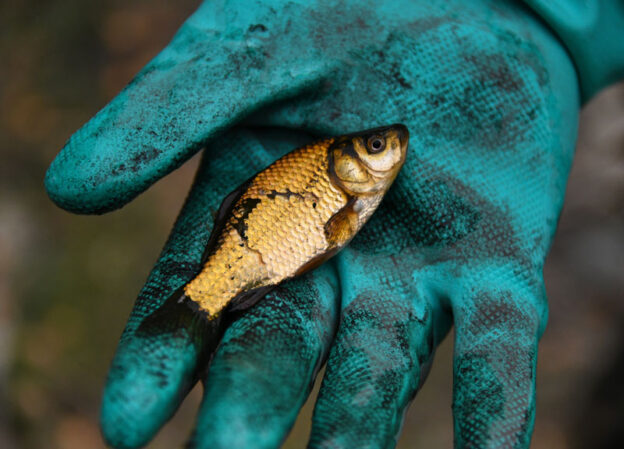Moose, when facing multiple winter stressors can be unpredictable and react aggressively.
Idaho Fish and Game staff recently moved three moose when they became a public safety hazard in Sun Valley, Ketchum and Hailey. Moose can become a threat to public safety, particularly if they become stressed by human activity such as people getting too close, or the presence of dogs, both leashed and unleashed.
On Saturday, January 14, 2023, a cow moose was moved from the Sun Valley Village after several instances of people approaching too closely led to subsequent reports of the moose showing signs of becoming increasingly agitated. In the interest of public safety, the decision was made to dart and anesthetize the moose and move it to Fish Creek north of Carey. This scenario is an example of the responsibility that visitors and residents alike share in respecting the space of wild animals.
On Thursday, January 19, 2023, Fish and Game received a report of a cow moose directly underneath the Challenger ski lift on the Warm Springs side of Bald Mountain. The moose, which was reported to be in the area for several days, was repeatedly in close proximity to the ski area with hundreds of skiers coming very close to the animal. Fish and Game managers decided that the risk to people was increasing so they made the decision to dart and anesthetize the moose and move it to Fish Creek north of Carey. It is unknown if this was the cow moose involved in the attack on a Ketchum woman one week prior.
Beginning in mid-January the Magic Valley regional office began receiving reports of a moose in a neighborhood on the north end of Hailey. Local residents were concerned that the moose, that had charged a dog in a backyard, might be a public safety risk. Fish and Game officers monitored the situation and on Wednesday, January 25, 2023, after receiving reports of the moose becoming more agitated, regional wildlife staff made the decision to move the bull moose. The moose was darted and anesthetized and moved into the Bennett Mountains north of Glenns Ferry.
The increase in human-wildlife conflicts with moose in the Wood River Valley may have several contributing factors.
Blaine County is home to a robust population of moose, which are commonly found in Valley communities, many of which are built within habitat favored by moose. Deep snow and cold temperatures can stress moose which rely on their stores of fat to carry them through the winter. Moose naturally attempt to avoid burning calories during winter months when food is scarce. Repeated encounters with people and dogs, especially those off leash, only compound an already stressed moose. If a moose becomes overly stressed it may trigger their fight-or-flight response, which may push the moose to fight.



